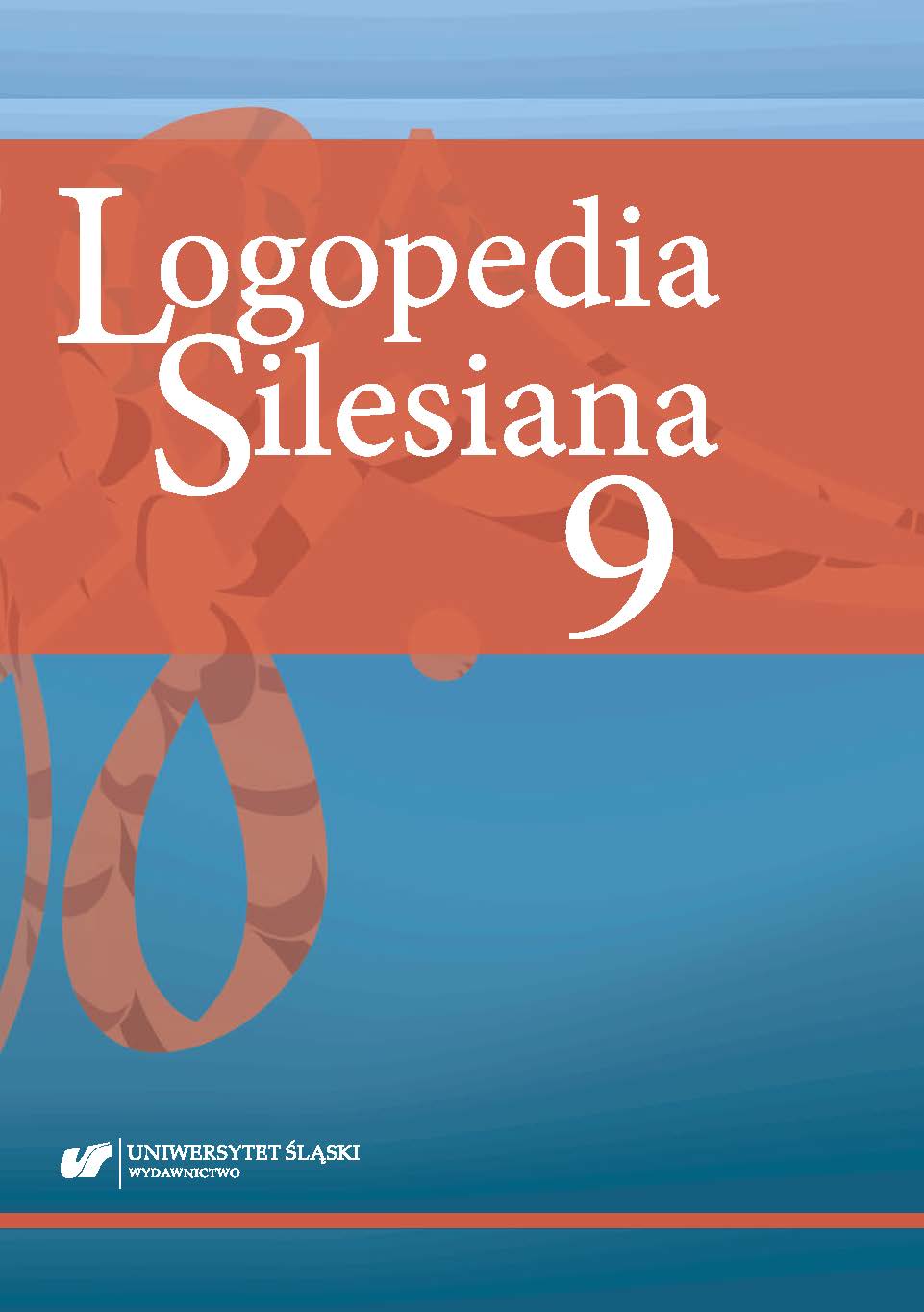Atherton, M., Davidson, B., & McAllister, L. (2019). Growing a profession: Clinician perspectives on the evolving practice of speech-language pathology in Vietnam. http://doi.org/10.6084/m9.figshare.7634732.v1.
Google Scholar
Gjurová, N. (2011). Čeština jako cizí jazyk pro začínající školáky: metodika pro učitele. Praha: Portál.
Google Scholar
Hájková, E. (2015). Jazyková výchova dětí s odlišným mateřským jazykem v české mateřské škole. Praha: Univerzita Karlova, Pedagogická fakulta.
Google Scholar
Kapalková, S., & Palugyayová, L. (2016). Narušená komunikačná schopnosť v multilingválnej spoločnosti. In: A. Kerekrétiová (ed.), Logopédia (45–50). Bratislava: Univerzita Komenského.
Google Scholar
Kapalková, S., & Tokárová, O. (2019). Schopnosť opakovania pseudoslov jako doplnok informácie o rodinnej anamnéze dieťaťa. Listy klinické logopedie, 1(1), pp. 56–60. https://casopis.aklcr.cz/archive.php?filtered=1&mag=lkl&year=2017 [access: 5.05. 2020].
Google Scholar
Kocourek, J., & Pechová, E (2010). Metodické poznámky k výuce češtiny pro Vietnamce. Praha: Klub Hanoi. https://www.inkluzivniskola.cz/sites/default/files/uploaded/metodicke_poznamky_k_vyuce_cj_pro_vietnamce.pdf [access: 5.11.2020].
Google Scholar
Komers, P., & Slezáková, J. (2010). Čeští Vietnamci mezi dvěma jazyky. Vesmír, 89(4), pp. 250–252. https://vesmir.cz/cz/casopis/archiv-casopisu/2010/cislo-4/cesti-vietnamci-mezi-dvema-jazyky.html [access: 5.04.2020].
Google Scholar
Lechta, V. (2007). Dějiny logopedie ve světovém, evropském a domácím kontextu. In: E. Škodová, & I. Jedlička (eds.), Klinická logopedie (pp. 29–35). Praha: Portál.
Google Scholar
Linhartová, T., & Loudová Straczynská, B. (2018). Děti s odlišným mateřským jazykem v mateřských školách. Praha: Meta – Společnost pro příležitosti mladých migrantů.
Google Scholar
Paul, R., & Norbury, C. (2012). Language disorders from infancy through adolescence. Listening, speaking, reading, writing, and communicating. London: Elsevier.
Google Scholar
Pham, B., & McLeod, S. (2016). Consonants, vowels and tones across Vietnamese dialects. International Journal of Speech-Language Pathology, 18(2), 122–134. http://www.doi.org/10.3109/17549507.2015.1101162.
Google Scholar
Pham, B., & McLeod, S. (2019). Vietnamese-speaking children’s acquisition of consonants, semivowels, vowels, and tones in Northern Viet Nam. Journal of speech, language, and hearing research: JSLHR, 62(8), pp. 2645–2670. https://doi.org/10.1044/2019_JSLHR-S-17-0405.
Google Scholar
Pham, G., Dinh, K.T., Dam, Q., & Ebert, K.D. (2018). Nonword repetition stimuli for Vietnamese-speaking children. Behavior Research Methods, 50(4), pp. 1311–1326. http://doi.org/10.3758/s13428-018-1049-0.
Google Scholar
Seidlová Málková, G., & Smolík, F. (2014). Diagnostika jazykového vývoje: diagnostická baterie pro posouzení vývoje jazykových znalostí a dovedností dětí předškolního věku: testová příručka. Praha: Grada. Psyché.
Google Scholar
Slavická, N.T.B. (2008). Praktická fonetika vietnamštiny. Praha: Karolinum.
Google Scholar
Slówik, O., & Tůmová, M. (2016). Percepce vietnamské češtiny. Nová čeština doma a ve světě, (pp. 15–30). Praha: Univerzita Karlova, Filozofická fakulta 2. http://sea-l.cz/media/1098/vietnamskacestina.pdf [access: 5.4.2020].
Google Scholar
Štefánik, J. (2010). Bilingvismus. In: V. Lechta (ed.), Základy inkluzivní pedagogiky: dítě s postižením, narušením a ohrožením ve škola. Praha: Portál.
Google Scholar
Teofilová, T. (2020). Vývoj komunikační schopnosti bilingvního dítěte v předškolním věku z logopedického hlediska. [Diploma thesis, Mgr.; Supervisor: J. Mironova Tabachová]. Olomouc: Univerzita Palackého v Olomouci, Pedagogická fakulta.
Google Scholar
Titěrová, K., et al. (2019). Průvodce pro poradny při práci s dětmi a žáky s OMJ. http:// https://www.inkluzivniskola.cz/pruvodce-pro-poradny-pri-praci-s-detmi-zaky-s-omj [access: 12.05.2020].
Google Scholar
Vasiljev, I. (2010). Vietnamština – jazyk na protipólu. Praha: Muzeum hlavního města Prahy.
Google Scholar
Vitásková, K. (2010). Multikulturní prostředí. In: V. Lechta (ed), Základy inkluzivní pedagogiky: dítě s postižením, narušením a ohrožením ve škola (pp. 400–416). Praha: Portál.
Google Scholar
Vitásková, K. (2016). Interkulturalismus – od multikulturality k plurikulturnímu pedagogickému přístupu. In: V. Lechta (ed.), Inkluzivní pedagogika (pp. 419–436). Praha: Portál.
Google Scholar


 https://doi.org/10.31261/LOGOPEDIASILESIANA.2020.09.23
https://doi.org/10.31261/LOGOPEDIASILESIANA.2020.09.23

 10.31261/LOGOPEDIASILESIANA
10.31261/LOGOPEDIASILESIANA